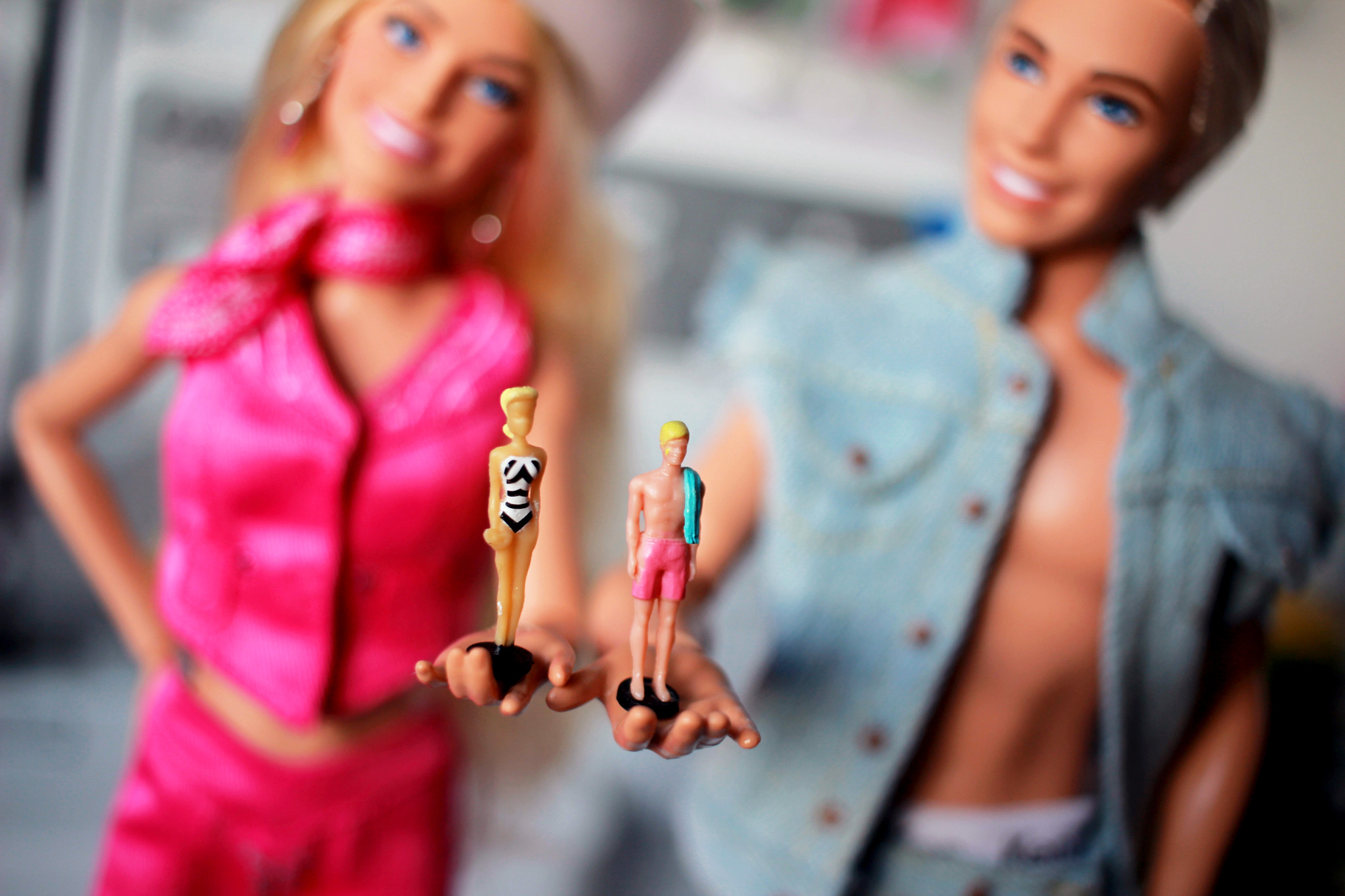Who Are You? – What Barbie’s Ken Teaches Us About Identity Crisis and ‘Your Core’

Barbie’s Ken is an unlikely source for profound existential insight. But that’s exactly what happens in Greta Gerwig’s movie Barbie: Ken discovers that besides being Barbie’s handsome boyfriend, he is pretty much useless, leading him down a hilarious path of identity re-definition. But we should all pay attention, because Ken’s identity crisis is everyone’s identity crisis. I speak to Hintsa Core Mentor and Coaching Director Tarja Mulari about what identity is, why it matters, and what we at Hintsa mean with ‘the Core’.
A middle-aged man wakes up one day and makes a startling finding: he doesn’t know who he is. All his life his identity has been based on one thing: supporting his spouse. Now he wonders: is that all there is to life? Is that all there is to me?
This is not exactly a ‘true’ story. This is the story of Ken, better known as Barbie’s boyfriend. For me, the most memorable moments in the new (surprisingly profound) Barbie movie weren’t about Barbie, but about Ken. In the movie, Ken has an epiphany. He realises he’s completely unnecessary except as his iconic girlfriend’s plus one – he’s always ‘and Ken’. While Barbie holds down a range of jobs – including astronaut, pilot, engineer, and president – all Ken does is “beach”. While Barbie has a great day every day, Ken only has a good day when Barbie looks at him approvingly. Like he explains himself:
“[Ken’s perfect day] would be if Barbie dropped something and she didn’t notice it, and he got to pick it up and say, ‘Hey, Barbie, you dropped this.’”
There starts Ken’s existential crisis. He goes on to discover patriarchy, hyper-masculinity, man caves and, confusingly, horses, on a hilarious journey of soul searching and self-discovery. If Ken’s not Barbie’s Ken, who is he? Who is ‘just Ken’?
The movie’s laugh-out-loud over-exaggeration, sprinkled with glitter and fur, hides just how profound this question is. Because, I would argue, Ken’s identity crisis is everyone’s identity crisis.
What is identity and why does it matter?
Your identity answers the question: “Who am I?”. It is the unique blend of your experiences, memories, relationships, values, and beliefs that create your sense of self. Tarja Mulari, Hintsa Coaching Director and Core Specialist, says that identity is fundamental for us humans. First, it helps you make sense of life and your role in it. When you know who you are, it’s easier to understand how to interact with the world. “Interestingly, I’ve had many clients who – just like Ken – have built their life on what other people or society want from them. We call that an ‘ought-to-be’ life, where you aren’t searching for ‘me’, but an ‘ideal me’,” says Tarja.
Second, a strong identity supports belonging – knowing who you are makes it easier to find communities where you feel social connection. And third, your identity frames your actions. “If you think of yourself as an outdoor person, you’re more likely to use your free time on things like skiing or hiking,” says Tarja. “This is why identity is so crucial in Hintsa coaching – grounding new habits in who you are will help make them lasting. This is part of Hintsa’s ‘Core’, consisting of three parts: identity, purpose, and control.”
Change can trigger a crisis of identity
It’s normal for your identity to gradually evolve through life. But sometimes we, like Ken, find ourselves in an identity crisis. Originated from the work of developmental psychologist Erik Erikson, an identity crisis is a period of intensive analysis and confusion of how to consider oneself. It is often brought on by a big life change: marriage, divorce, becoming a parent, trauma, losing a loved one, or moving to a new place. “Symptoms of an identity crisis can be loss of purpose, low self-esteem, anxiety, or difficulty regulating emotions,” says Tarja.
Personally, I’m no stranger to an identity crisis. For the longest time, I defined myself through my work – that was the central theme of who I was. I was my good grades. I was my degree. I was my fancy job. I was even my nice Power Point slides, which meant I would work on them long into the night to make them just so. After all, they were a reflection of me.
You might guess that’s not a sustainable way to live. You’re right. On the good days, it was great! But on the poor days, it was a sure path to unhealthy perfection, exhaustion, self-doubt. My self-confidence would rollercoaster to highs and lows along with my success (and failure) at work. I felt a lot like Ken who says heartbreakingly to Barbie, “I just don’t know who I am without you”.
Tarja explains, “We can think about identity as a house. If your identity only has one pillar to prop up the house, it’ll be unstable. The smallest setback can cause a crash – exhaustion, loss of meaning, depression, or burnout.”
From identity to multi-faceted roles
Tarja continues, “What you describe about your one-sided identity, I very often see in my work,” Tarja reassures me. “But it doesn’t necessarily mean your life is one-sided, perhaps you simply haven’t paused to reflect on it. That’s why I often begin with something more concrete – roles. What are the roles you have in life? From there we go to values in those roles, and gradually build a stronger, multi-pillar identity.”
Huh. I wish I had known that in my ‘my-work-is-me’ phase. Because it wasn’t until I became a mother – when I took on a completely new and different role – that I truly realised that things beyond work can define me. I was no longer just “a high-performer” – I was also “a mother”. Now my identity had a second pillar to stand on, and my self-confidence wasn’t as fragile.
“Good, that’s progress”, says Tarja, “but before you pile on new roles, one word of caution. Your identity shouldn’t be over-reliant on external factors – your company, your work, your kids, your spouse, your car – it can make you fragile.” For example, being a parent is important, but if that’s who you are, what happens when the little sweethearts become parent-avoiding-teens or move out? If you define yourself through your work, what happens if your company fails, you lose your job, or you retire? If you define yourself through your bank account, what happens if you lose your money? Or perhaps worse: what happens if you reach your financial goal, but still feel empty?
In the movie we watch Ken try to redefine himself through external elements – extravagant clothing, aggressive behaviour, horses – and different roles; not just ‘Barbie’s boyfriend’ but also, hilariously, ‘member of the patriarchy’ and ‘founder of Ken-dom’. “It’s a good start for a plastic doll,” says Tarja, “but it’s still tied to external elements. Who is ‘just Ken’?”.
Indeed, that is where Ken ends up in the movie. After realising that he’s just a pretty accessory in Barbie’s world (and his own hyper-masculine Ken-dom proves unsuccessful), Ken discovers his intrinsic Ken-ergy: “Here I’m just a dude and you know what? That’s enough.” (or memorably: ‘Kenough’).
From identity to living your identity, daily
For a movie about pretty toys, that’s enough – there’s a soothing simplicity in Ken being ‘just a dude’. But in real life, that would merely be the start.
“If Ken was my client, I would ask him: ‘Great, you’re ‘just a dude’. But what kind of a dude? How do you express your dude-dom?’” says Tarja. “That’s the next step: what are your values, and how are they expressed in your roles?”
Tarja knows what she’s talking about. She used to be an Olympic alpine skier – that was who she was. When her athlete career was over, she got a degree, got married and had kids. But simply defining herself as a ‘mother’ was not enough. She went further and asked herself: ‘What are my values related to motherhood?’ That changed everything – she defined herself, e.g., as a ‘present mother’, outlining actions and habits that express that in daily life. “It’s not uncommon for my clients to identify as a ‘parent’ or even an ‘engaged parent’, but when we look at their calendar and their actions, they might not actually live according to that role. This can also trigger an identity crisis – knowing who you are, but not living your kind of life.”
From identity to exploring your Core
Existential and identity crises can be complex and messy. So how would Tarja summarise the learnings for us? “First, diversify your identity by defining multiple roles.” (So not just ‘Barbie’s boyfriend’ but also ‘founder of Ken-dom’) “Second, don’t just rely on external factors – someone else’s arguments – but intrinsic ones.” (Yes, ‘founder of Ken-dom’, but also ‘just a dude’.) “And third, define concrete values and actions that support your identity.” (So, ‘what kind of dude’ are you? What actions support it?)
“But we wouldn’t stop there. Identity – the question “Who are you” – is just one of three parts in what we at Hintsa call ‘the Core’”, says Tarja. The second part of Core is purpose, as in “What do you want in life?”, and the third is control, as in “Are you in control of your life?”
“For some people these questions are simple, for others they are a life-long exploration. Either way, exploring your Core is the birthplace of sustainable change, and that’s why even if our clients aren’t anywhere near an identity crisis, we keep coming back to these questions for their unique power to re-frame and change lifestyle habits.” says Tarja.
So if you, like Ken, ever feel like it’s someone else’s world and you’re merely living in it, then you might benefit from some existential identity exploration. There’s carefree comfort in playing a supporting role. But if you’re something like “a mom who’s great at PowerPoint” or “boyfriend to the world’s hottest astronaut slash president”, ask yourself: Besides that, who am I, really? What am I doing today to support a strong identity? Because in your life, you deserve a leading role.
Photo credit: Nuwandalice



